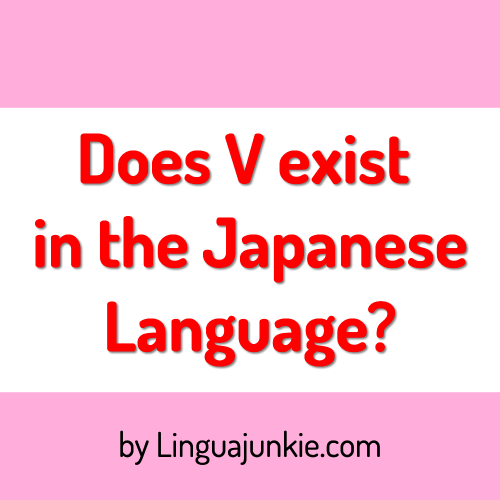
You may be wondering…
Is there a V in Japanese?
If you listen to Japanese speakers, you may have noticed that there is no “V” sound.
Why? Well, that’s where this quick guide comes in.
Why No V in Japanese?
Simple.
It just doesn’t exist.
“V” is not a part of the pronunciation and consonant structure of the Japanese language.
There is also no exact way to write this sound in the way it should be pronounced in English.
As such, there are no traditional Japanese words that have a “V” sound.
And this is likely why some Japanese speakers struggle to learn English pronunciation.
However, in recent times, the Japanese language has added more foreign borrowed words to the vocabulary.
This had led to the development of a unique system on how to translate “V” words to match Japanese pronunciation.
What to use instead of V?
Since the Japanese don’t use “V…’
They automatically hear and write “V” sounds by using the consonant “B”.
There are no real “V” words in Japanese but there are many foreign borrowed words like video, vacation, or vanilla that are used frequently in Japanese.
For example, video becomes bideo, vacation becomes bakeeshon, and vanilla becomes banira.
In this way, the Japanese have adapted to “V” words entering the vocabulary by simply changing them to use a “B”.
Remember, Japanese letters are usually a combination of a consonant with a vowel. You would have known this if you learned about the Japanese alphabet.
Here is how “V” words with vowels are transformed in Japanese katakana. Katakana is one of the three Japanese writing systems that are used to represent foreign or borrowed words.
- Va -> バ (Ba)
- Ve -> ベ (Be)
- Vi -> ビ (Bi)
- Vo -> ボ (Bo)
- Vu -> ブ (Bu)
Example of V words in Japanese
Here are some common foreign “V” words that are used in Japanese to gain a better understanding of how they are pronounced.
1. Video (ビデオ) – Bideo
This is a common word in Japanese that is used to refer to video clips and recordings. Just like in English, you can say video but with a “B”.
2. Vacation (バケーション) – Bakeeshon
This is used as a word in Japanese when you’re taking time off of work or school. It has the same meaning as in English.
3. Vanilla (バニラ) – Banira
Vanilla is also a popular flavor in Japanese sweets. It can also be mixed in more traditional Japanese flavors like matcha.
4. Violin (バイオリン) – Baiorin
Western classical music is popular in Japan so you’ll likely see the word violin written in Japanese katakana outside a music school.
5. Vitamin (ビタミン) – Bitamin
Just like in other parts of the world, many Japanese people like to supplement their diet with vitamins. These are sold using this katakana format.
6. Variety (バラエティー) – Baraetii
This is a unique word in Japanese because it has a similar meaning in English but is used in specific situations. For example, there are T.V. shows called “variety” shows where they cover different topics. Some stores are “variety” stores that sell all kinds of small and random items.
7. Version (バージョン) – Baajon
You’ll hear this word when people reference app updates. Japanese people will say “Version Up” to represent a new version coming out.
8. Vocaloid (ボーカロイド) – Bookaroido
Vocaloids are an important part of Japanese music culture. You’ll find large fan bases around artificial singers whose songs are created using synthetic voices.
9. Voltage (ボルテージ) – Boruteeji
Another word in Japanese that you’ll find borrowed from English is voltage. However, it’s typically used to mean when you’re excited or energized for an important event.
10. Valentine’s Day (バレンタインデー) – Barentain Dee
Just in case you needed to know for an upcoming Valentine’s Day.
Well, you get the point.
Back to You
Now you know why there’s no V in Japanese…
And how “V” turns into “B” in Japanese.
Any questions?
Leave a comment.
I read them all.
– The Main Lingua Junkie